Devin Kyle Cuthbertson: Pharaoh Artist of Bushwick, Brooklyn
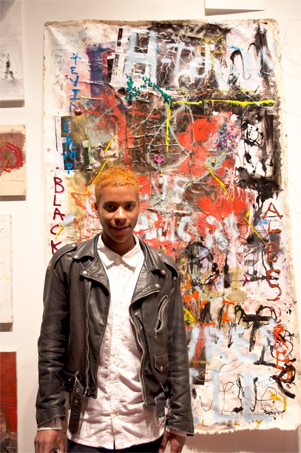
It’s Friday night. Bushwick New York. You’re in what my girlfriend (and Hugh Grant) would call the dodgy end of the New York art community. You get off the L train and swing a right on Johnson Ave in search of Youth Group Gallery. In search of Devin Kyle Cuthbertson and the opening of his latest solo art show “Now That all The Riff Raff is Gone.”
Fuck that. Too surreal sounding… start again: Don’t you hate that annoying text on a Saturday morning? You wake up, punch in the code to unlock your phone. Fuck it up because you’re too tired. Punch it in again and finally read a single short message, marking you immediately as this weekend’s unofficial damn fool. It reads:Yo! Why’d you go home? The after-party was AMAZING!†Congratulations. You just played yourself. You thought you saw Devin Kyle Cuthbertson’s solo art show but you missed an awesome music set by The Good Kids. Not to mention a live performance by Devin in the form of his musical alter-ego Psychoegyptianaryan Boy.
Verbose, a little too condescending. One more try. Here, at the end of an age that may be defined by war, recession, and a western identity still reckoning with its grandest hopes deferred, Brooklyn native Devin Kyle Cuthbertson has done something truly amazing at Youth Group Gallery. He has found a way to reach into the greasy innards of the New York, perhaps the American zeitgeist and pull out the dirty truth. By way of his own individual brilliance he has denied artistic convention with the fiercely intelligent, yet unashamedly derogatory esthetic that courses through his art and, inevitably, all those who view it. Yeah, that sounds better.
Now, I’ll admit that trial and error isn’t always the best path to genius. But I think that’s what you have to do when you want to wrap you brain around the new, the unexpected, the places and moments that you simply haven’t seen before. The artwork on display at Cuthbertson’s “Now That All the Riff Raff is Gone” show was no exception. His work was severe at some moments, whimsical at others. The freestyle cypher was pretty laid back but when Devin himself held the mic, the crowd watched him gyrate with a weird intensity. Streaks of brown and yellow paint in a particular piece remind the viewer of dirt and mess but a deliberate and cohesive brushstroke pattern always belied a careful plan.
Devin’s social network is more than a melting pot. It’s the stuff of legends. He’s the man with a million friends. One moment he’s dishing with Venus X, a powerful member of New York’s new DJ royalty. Another moment he’s spotted doing video modeling work with Mykki Blanco, or modeling clothing for Ale et Ange. The next thing we know, he’s discussing the future of Black art with Rasheed Johnson and the Artist elite.
With respect to Cuthbertson’s herculean task of shattering misconceptions of his being the second coming of Samo, it must be said that if the cast and characters of the New York art elite today could be paralleled to that of the Studio 54-era 1980’s scene, one could place Devin Kyle Cuthbertson in the role of Jean-Michael Basquiat. Some art critics already do. The reasons are passed and obvious. Isn’t this again, the work of a young Black artist trying to redefine the art world in New York? Isn’t he also beloved by the scenesters of his day but forced to carve his unique place among them from the inside out like Jean-Michel? And when all else fails one is tempted to ask, doesn’t Devin look just like Basquiat?
These superficial parallels are of course ridiculous. Devin is something other, perhaps something more than a Jean-Michel Basquiat or the scene itself for that matter. He, for one, would never settle for the title neo-primitive artist, the way Basquiat was forced to. He wouldn’t settle for any title at all, other than one of his own choosing of course. His exploration of Black guilt and morality, tragedy and power, help to carve a kind of new black righteousness out of the ether with what can only be defined as an outright personal tyranny on the part of the artist.
Through his musical persona, Psychoegyptianaryan Boy, he has bred for himself a self-contained tyrant-child, discarding Samo’s crown for the ornate headdress of a Pan-African Pha raoh, a wayward but dangerous product of the ghetto with no place to go but within himself to attain the power to impress his own agency onto his surroundings. As a painter, he is tragedy’s champion, planting a flag of beauty in the most grotesque places of the viewers psyche, smoothing out the kinks of his experience by appropriating them as functionaries of his own eccentric palette. We have yet to see the product of his foray into film art, but his Daryl Michael Basquiat feature promises to appear soon for our criticism and praise.
I sat down to an interview with Devin because I wanted to unpack some of the puzzle. Here he was at the cusp of a new kind of success. A solo art show that brought forth the who’s who of the Brooklyn art scene in droves. What was going on in the mind of the man at the center of this firestorm?
iLikeZach: Answer however you want.
Devin Kyle Cuthbertson: Okay
iLZ: If you had to answer the question, Who is Devin Kyle Cuthbertson? What would you say?
DKC: I’m just a nigga from the hood son. [laughs] Nah, Devin Kyle Cuthbertson is a person who is actually still trying to sort things out. Just trying to make sense of his life, how he was raised, the people he was raised by, the environment he was raised in. But also trying to make sense of how all that got him to where he is now.
iLZ: Where are you from?
DKC: I’m from Bushwick, Brooklyn. I come from a house of mostly women, where I learned a lot about how fucked up men are. Where I had to contend with men being fucked up and how I therefore might be a potential fuck-up. I come from a place where every Sunday my aunt was straightening her hair with a boombox blasting R&B out her window. Real slow, deep shit. I come from a neighborhood stigmatized as being a ghetto when it was always way more complicated than that for me.
iLZ: What do you seek to destroy?
DKC: What do I seek to destroy? Suffering. If I can do it, yeah, suffering. I seek to destroy the values and systems of thinking that keep people at a disadvantage and that keep people from being able to be creative, like jail. Jail is one [thing I seek to destroy].
iLZ: What do you seek to build?
DKC: The opposite of jail. Just a world for myself and my people where we are able to realize ourselves and our abilities so that we can materialize our lives in a way that aligns with a future where we can provide a legacy for our children, for whoever comes after us, so that they can feel a greater sense of freedom and also so that they can have something to destroy in us, in case they want to destroy our legacies.
iLZ: On the subject of freedom, talk to me about your experience on Rikers Island
DKC: Yeah. I was arrested on night when, on a whim, I got this idea to [graffiti] write Jay-Z†throughout New York and to [graffiti] write different passages from songs that he made. I got caught in the act of doing that in my neighborhood half a block from where I live. And I had to do time because of that and a warrant that I just kinda forgot about.
iLZ: What was that experience like from the perspective of an artist?
DKC: I was scared. Rightfully so. I was this skinny fucking artist dude going into prison and I had bright-ass blonde hair. I just started to drawing in jail cause I was bored. Immediately people picked up on it and were just like, oh can you draw this design for me for valentines day for my girl for my mom, for my tattoo. It was moving for me to see how what I did was valuable, not just within the confines of the art-buying elite, but among people just trying to get through some shit. It just gave me a different sense of how art could function. In my warped mind that had been taught that there’s only a certain group of people who can appreciate art, I just learned that was not true.
It also impressed me to see how beautiful, and smart and ingenious people in there were, the amount of inventiveness there is in jail without having the resources. Things like inventing ways to smoke a cigarette and not get caught. I’m just really into that. Finding alternatives.
iLZ: Who are your artistic influences?
DKC: I really like artists who tread the line of acceptability and troublesomeness to the point of it being illogical. I like the playwright Antonin Artaud. I like a gay artist named David Wojnarowicz, who dealt with life on the lower east side in the 80s. I like the futurists. I mean, now, we can call them problematic because they were fascist in particular regards but I really like what they were doing. Who else? I like an artist who I am friends with, who made me rethink how art can be and how I could inject myself as a black man into America, post racial America, whatever you want to call it. His name is Rasheed Johnson.
The man with plans to start a grassroots artist collective to support the creative development of people of color. The man who released a trailer for a feature length film he wants to produce about Daryl Michael Basquiat, the supposed lost heir to the Basquiat estate. I think he also mentioned a desire to do performance art with dom-porn, Skin Diamond sometime in the near future. The riff raff is gone indeed. Devin Kyle Cuthbertson is here.

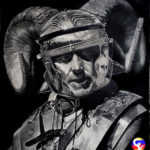
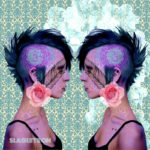
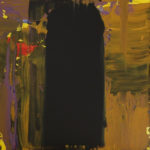
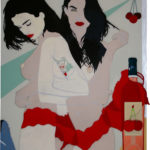
1 COMMENT
Pingback
12/07/2015Chis